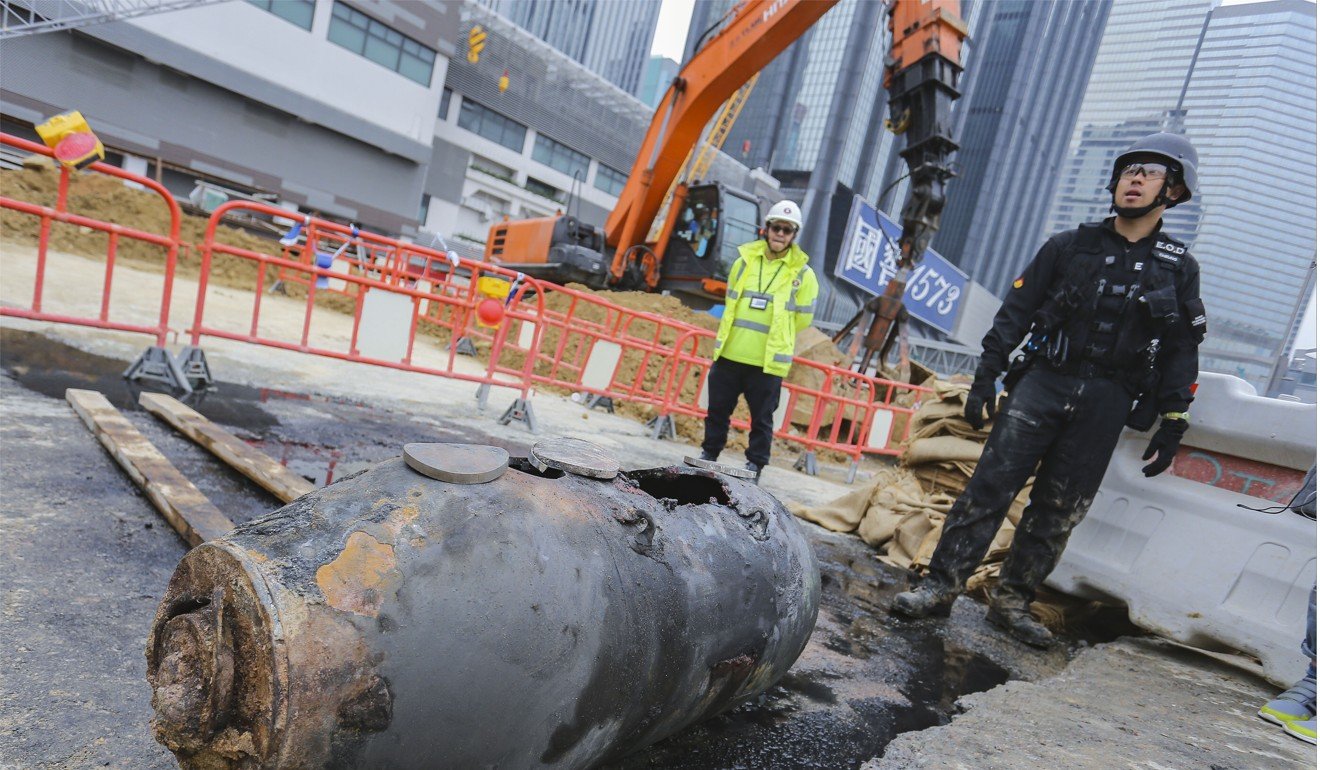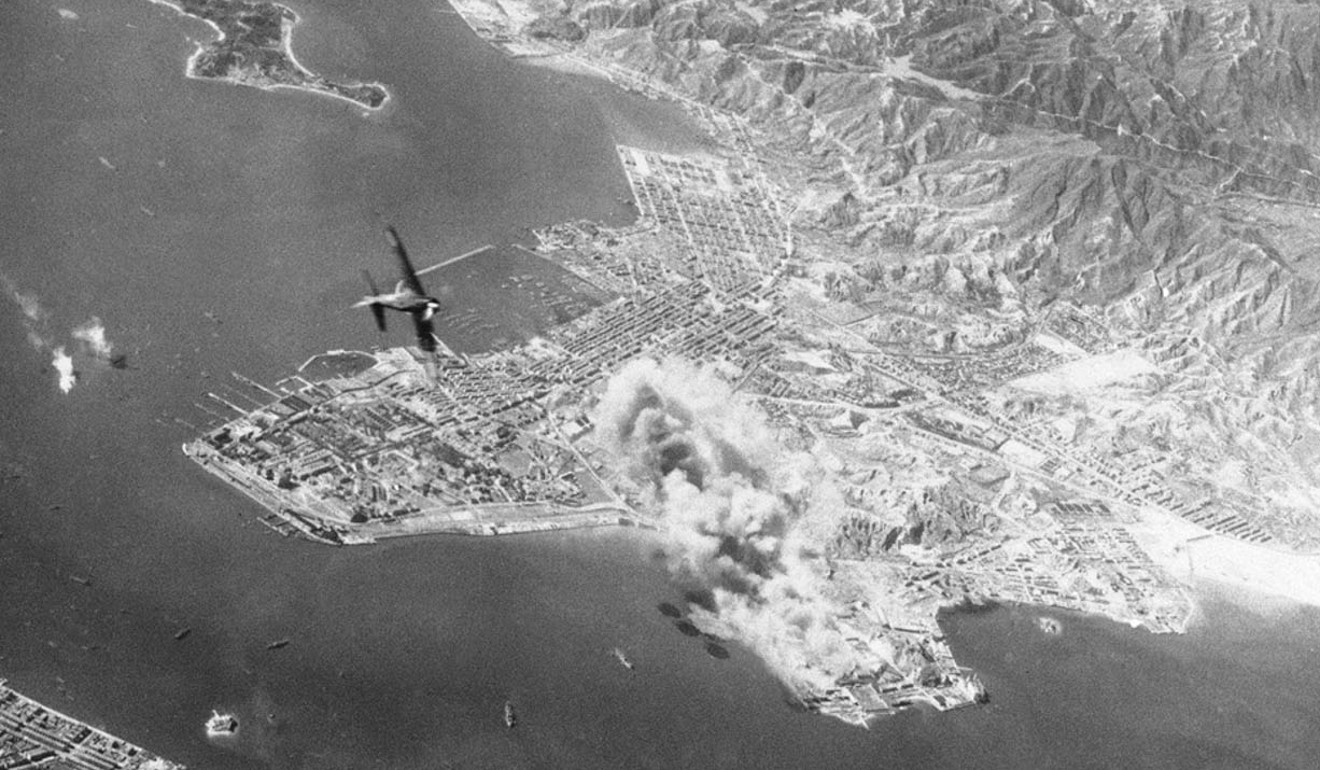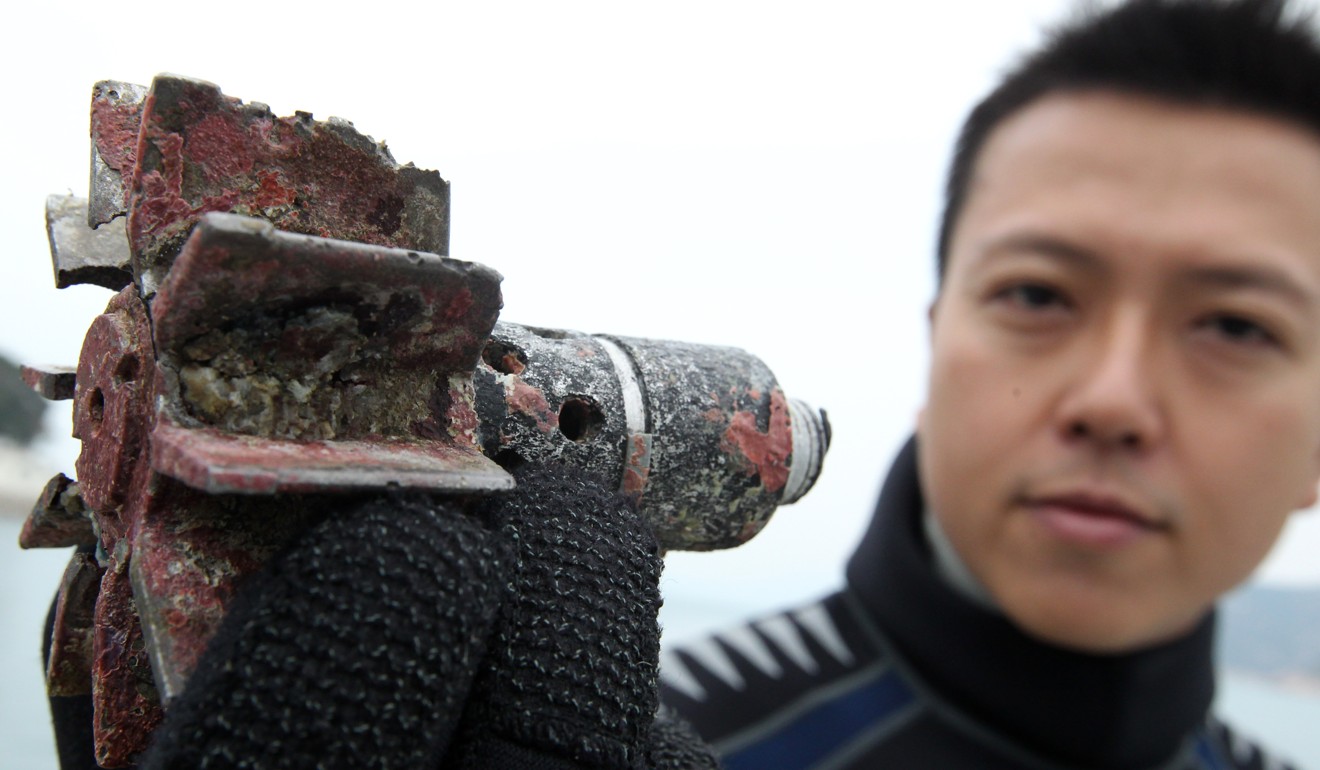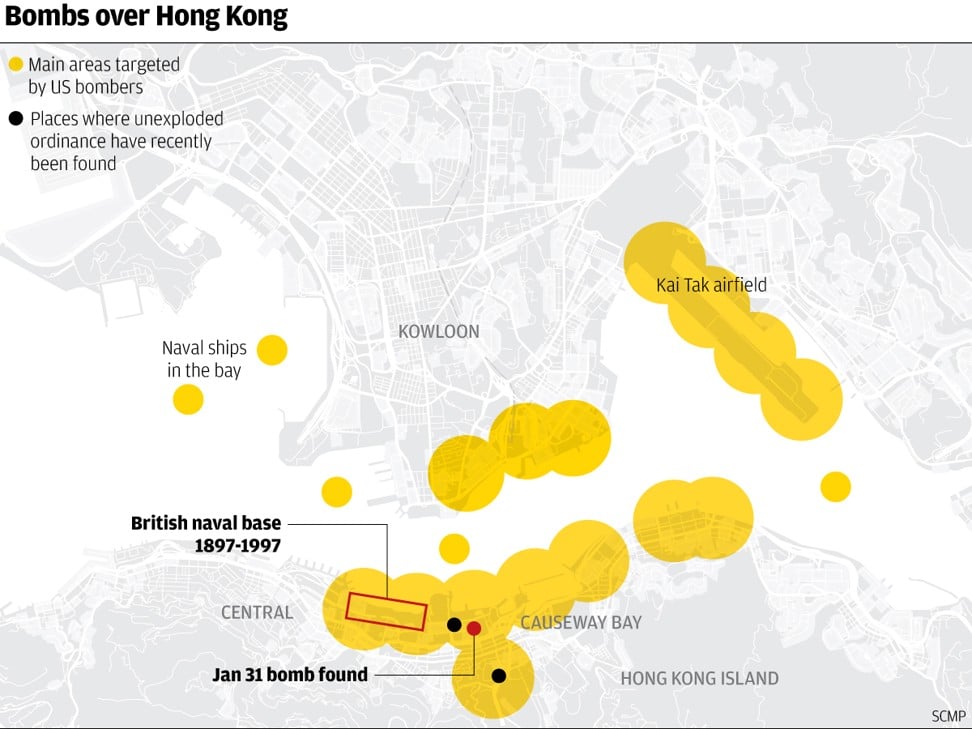
Why does Hong Kong have so many buried wartime bombs?
During the last legs of the Japanese occupation, US planes dumped thousands of tonnes of explosives on the city to destroy shipping and docking facilities. Those that didn’t go off are still a threat today
By mid-afternoon, police had closed roads and ordered students and office workers in the area to go home, with bomb disposal operations expected to last well into the night.

Workers unearthed the first device – cigar-shaped, 140cm long and 45cm in diameter – on Saturday.
The authorities sprang into action and cleared an area within a 400-metre radius of the site, piling up sandbags for extra protection.
Hong Kong’s ticking time bomb: unexploded wartime ordnance
Senior bomb disposal officer Tony Chow Shek-kin said the device, an American-made AN-M65 likely dropped by US warplanes during the second world war, contained 225kg of explosives.
Had it exploded, it could have sent shrapnel flying up to 2km away, with the impact being felt within a 200-metre to 300-metre radius, he said.
Military historian Kwong Chi-man suspects the bomb was dropped 72 years ago in a big bombardment by US Navy planes during the Japanese occupation of Hong Kong, which lasted from January 1942 to August 1945.
On January 16, 1945, Task Force 38 of the US Navy dispatched 471 planes to attack the city, dropping 150 tonnes of ordnance, including 13 bombs weighing 907kg and 72 weighing 450kg.
Kwong said it was “probable” that the bombs were dropped during that attack.
“It was the biggest bombardment suffered by Hong Kong during the Pacific War,” the assistant professor at Baptist University said.
And more unexploded wartime bombs could be buried around Hong Kong, experts said.
Who dropped the bombs?
Most wartime bombs were dropped by US planes, with a small number by British and Japanese military.
After the Japanese invaded and occupied the city, it became a logistics centre for the Japanese military in the South China Sea, Kwong said. Ships transporting oil and food between Southeast Asia and Japan stopped at Hong Kong to refuel.
“The Americans were primarily concerned with destroying the Japanese shipping and supporting docking facilities,” Dave Macri, a history professor at the University of Hong Kong, said.
Secret wartime agents who defied Japanese during occupation of Hong Kong

The US 14th Air Force led by Claire Lee Chennault was “flying over Hong Kong all the time,” and the US Navy were involved later, Macri said.
That is why some of the bombs were huge, as they were used to blow up warships and battleships, Macri said.
“If a 500 pound bomb was dropped at a dry dock, it would probably blow up the whole dock and anything inside it,” he said.
“[Now] it can easily wreck a building and smash everyone in it.”
So how many unexploded bombs are there likely to be in Hong Kong?
Former Cathay Pacific pilot and amateur historian Ian Quinn estimated in 2000 that American forces unleashed 4,000 bombs on Hong Kong and about 30 per cent of them failed to detonate.
Kwong agreed, saying that it was hard to be sure but his guess was that the figure would likely be in the “hundreds, if not more than a thousand,” Kwong said.
Experts said many munitions were dumped at sea after the war and on land, people had stumbled upon grenades, projectiles, bullets, and other small arms.
At least 35 discoveries of munitions in places such as Pok Fu Lam, Stanley and Ma On Shan were recorded by media during the past five years.

Half of the discoveries were on Hong Kong Island, with 17 per cent near Wan Chai and 9 per cent in Pok Fu Lam.
This is because heavy bombing occurred around the Victoria Harbour and especially in Admiralty, where the British Royal Naval base taken over by the Japanese was located, Kwong said.
Witnesses to horror: the Allied civilians in wartime Hong Kong who watched, helpless, as Chinese starved at hands of Japanese
If the bombs have been buried for so long, could they still explode?
Unexploded bombs are no less powerful as time goes by. On the contrary, they become less stable and more dangerous, experts said.
Bombs that failed to detonate likely had manufacturing flaws or did not hit the ground with a strong enough impact to result in an explosion, Kwong said.
Over the years, the combined effects of detonator erosion, changes to the climate and vibration meant unexploded bombs were still dangerous and not just a wartime relic, according to Adam Roberts, a veteran bomb-disposal officer.
Hong Kong workers and residents evacuated after discovery of wartime bomb
People have been killed by wartime bombs that exploded after they were uncovered, or when they attempted to dismantle the bombs without training. The most recent tragedy happened in Kuala Lumpur, Malaysia, when an unexploded device from the second world war blew up at a construction site in October 2017. One worker died and two were injured.
Hong Kong has had one incident of a wartime bomb causing casualties. In 1993, a dredging vessel detonated a 225kg bomb beneath the seabed near Tsing Yi. One crewman was injured, and the 5,600 tonne vessel was heavily damaged.
If a 500 pound bomb was dropped at a dry dock, it would probably blow up the whole dock and anything inside it. [Now] it can easily wreck a building and smash everyone in it
Given the frequent dredging, reclamation and construction work on and around Hong Kong, experts said the city needs better legal protection and risk mitigation for unexploded ordnance.
How are bombs defused?
Police would first clear the site of traffic and people, and then protect it by building sandbag walls. Bomb disposal officers would then remove smaller devices for disposal elsewhere, often through controlled explosion.
But larger ones, such as the one found on Saturday, have to be handled on site. With the 450kg bomb, office first used pressurised water mixed with steel grits to drill three holes in the metal casing. They removed the explosives and burned it off using a special igniter that capped the temperature below 280 degrees Celsius (536 degrees Fahrenheit), according to senior police bomb disposal officer Tony Chow Shek-kin.
Police sent more than 10 officers from its Explosive Ordnance Disposal Bureau, which was established in 1972, to conduct the operation.
Forty wartime bombs found at construction site in eastern China
Where else in the world are there likely to be many unexploded bombs?
In Okinawa, Japan, about 5 per cent, or 10,000 tonnes of the estimated 200,000 tonnes of bombs dropped there did not explode. The Japanese and US military cleared more than half of them shortly after the war, but disposing the rest would take a few more decades, according to the Japan Environmental Council.
Elsewhere in Asia, North Korea, Vietnam, Cambodia and Laos all have large numbers of unexploded devices. In Germany, over 2,000 tonnes of unexploded munitions are uncovered each year, according to the US publication Smithsonian Magazine.


